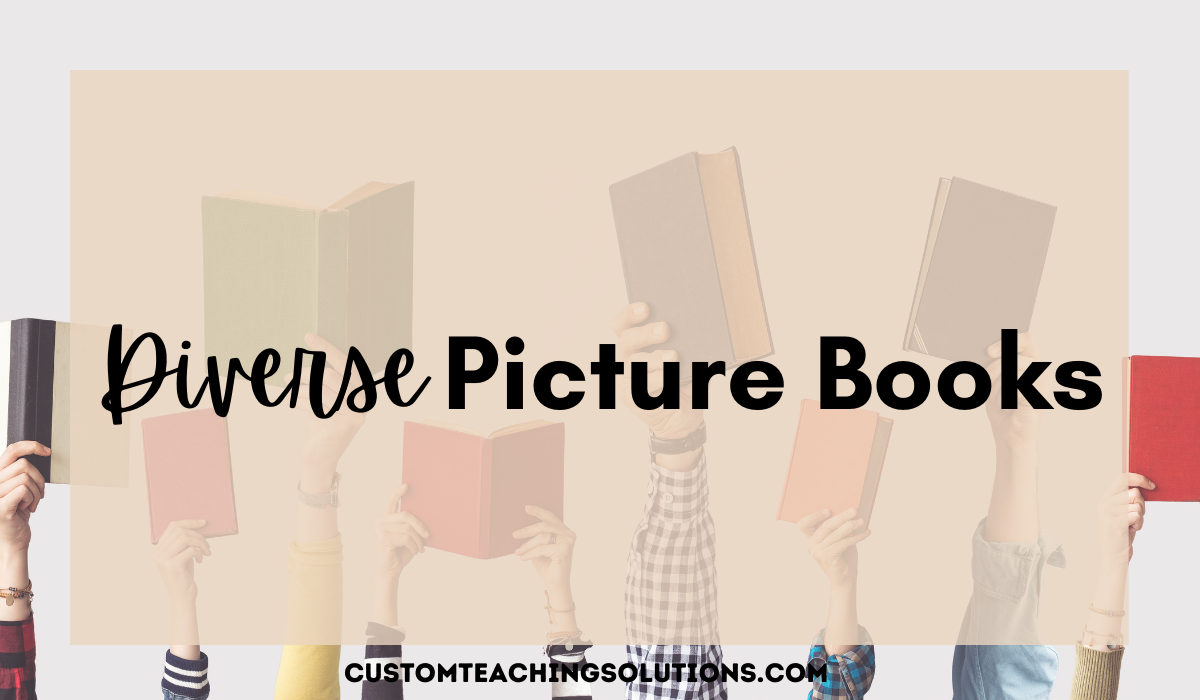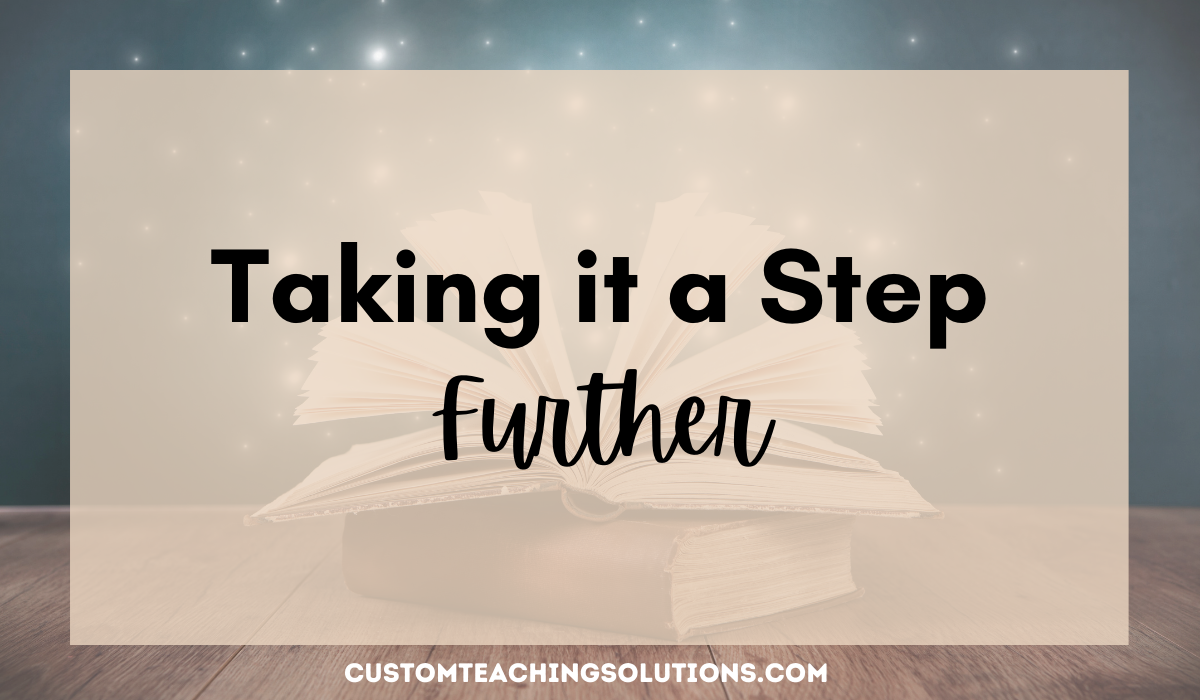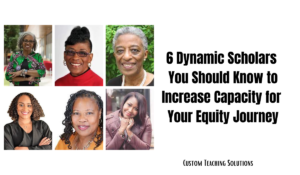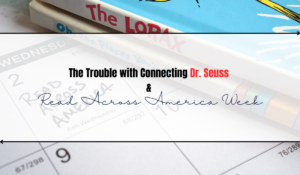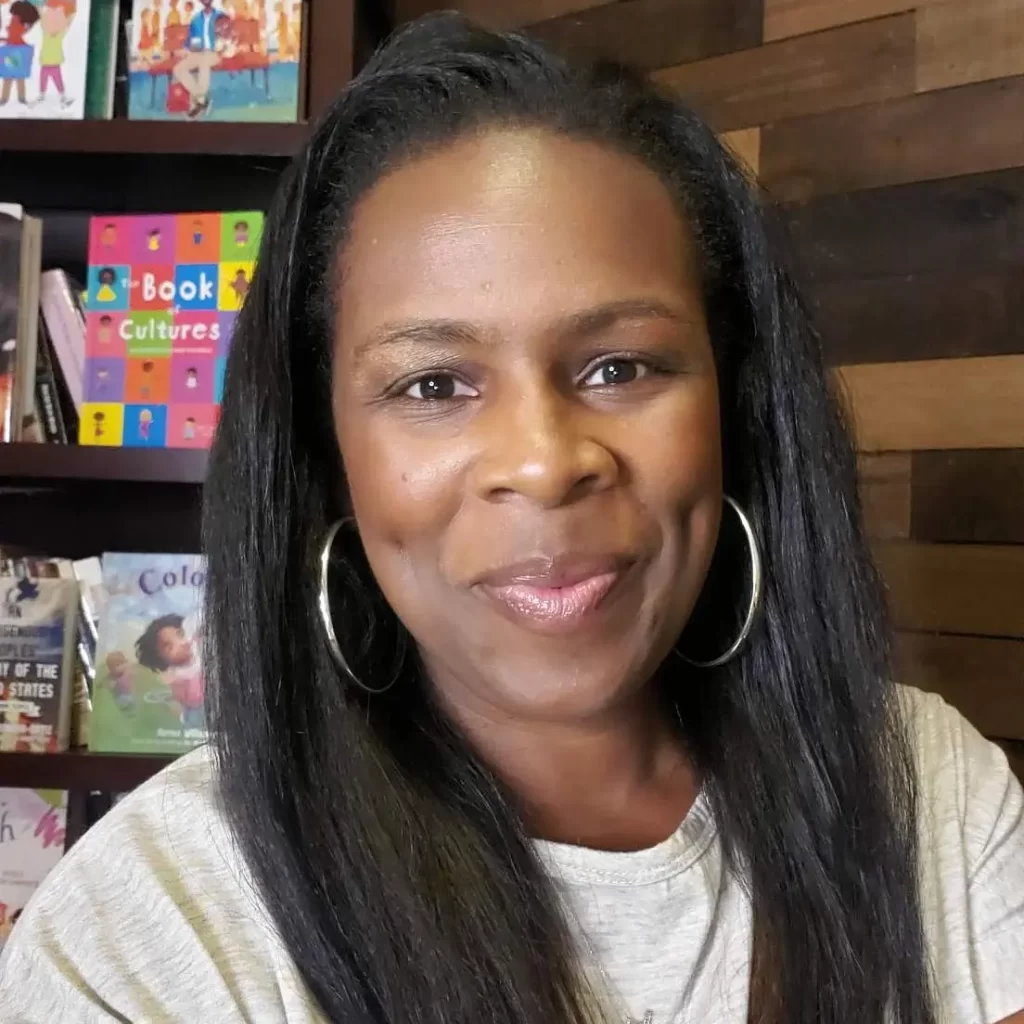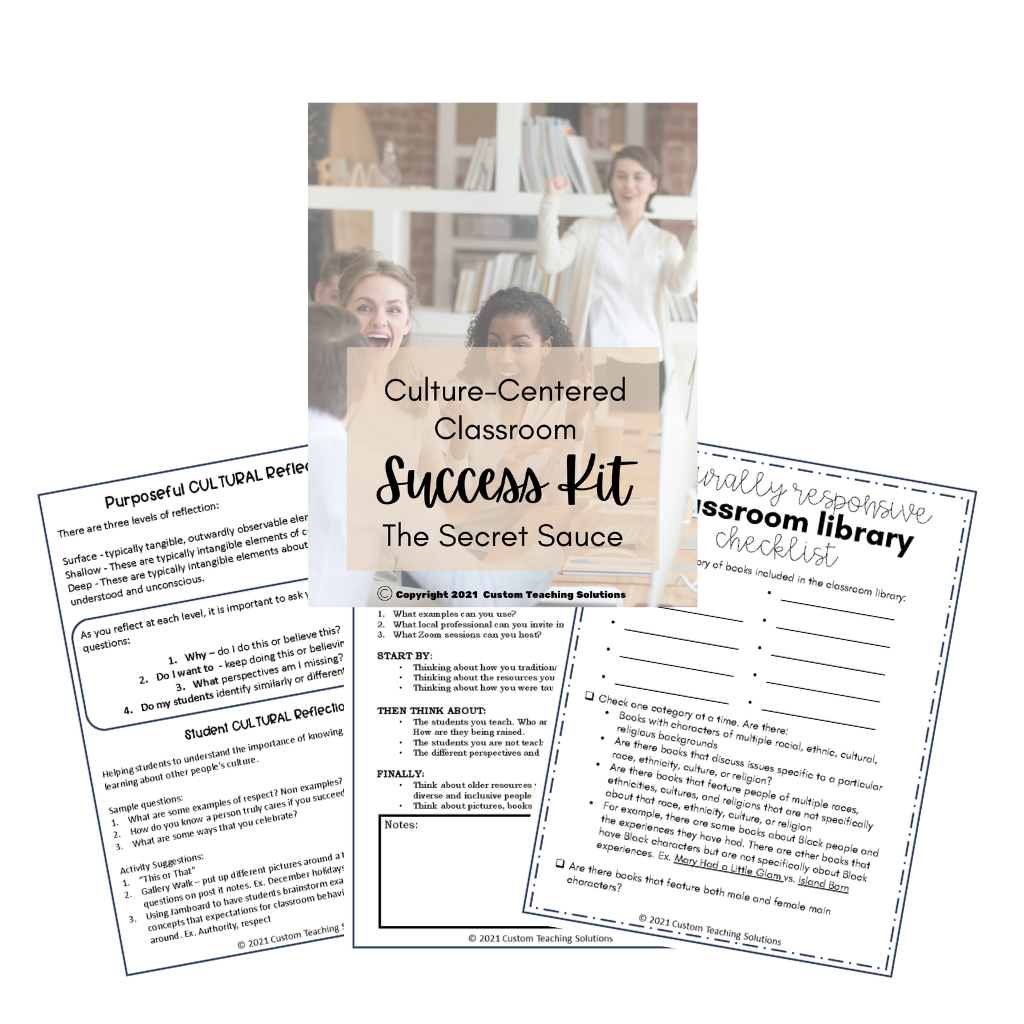Diverse picture books in middle school? Yep! People often associate picture books with preschool and elementary school, but they are a powerful resource in the middle school classroom as well. Picture books often discuss more challenging topics in very simple ways. In addition, the pictures help students better understand and visualize the concepts being discussed.
The beauty of picture books is in the simple, but solid foundational message presented. These simple messages make it easier to build background knowledge with students of a wide range of ability levels.
Diverse Picture Books
Using diverse picture books expands the depth, breadth, and level of connectedness in the lesson. Using these stories allows more students to see themselves in the message being presented. In this way students are affirmed, welcomed, and celebrated by acknowledgement and representation.
So, how can you specifically use diverse picture books in the middle school classroom? You can use them as:
- read alouds to teach or review literary terms.
- examples of different styles of writing.
- a pairing with a poem, short story, or novel.
While all of these are fun ways to use picture books, my favorite is as part of a novel study.
- Choose a novel
- Identify key themes
- Choose diverse picture books that discuss similar themes
Begin with a novel preview. Read the back of the novel to students. Have them identify possible themes. You identify a few more. Read a few picture books that discuss similar themes to build background knowledge. Discuss the themes to develop a greater level of understanding.
Taking it a Step Further
In addition to reading the diverse picture books, I like to continue building a foundation and reading stamina by exploring the themes further through short stories and articles. Doing this allows me to bring in different perspectives, feature different types of people, and highlight different places. Structuring my novel study this way also ensures the continued development of cultural competence in my students. They are able to reflect on these three important questions:
- What am I learning about myself? This includes developing an understanding of their beliefs, biases, expectations around the topic.
- What am I learning about my peers? This includes hearing and understanding the variety of perspectives their peers have about the topic.
- What am I learning about the world around me? This includes the ability to develop and understand the larger picture.
From Picture Book to Novel Study
For example, if I plan to read The Breadwinner by Deborah Ellis I would start by reading Malala’s Magic Pencil by Malala Yousafzai. This picture book, told from a young female perspective, helps me begin conversations around themes covered in the novel. Malala’s story connects well with the novel because she is denied an education just like Ellis’ protagonist. While reading this book, I determine how much the students already know about things like Taliban rule, the Islamic religion, and different ethnic groups in the Middle East.
I would then have students read an article like, “A Taliban Escapee, an English Baby – and the dramatic story that followed” by Owen Amos. This article is written about a young male named Shams’ experience. Like Ellis’ protagonist, Shams grew up only knowing war. In addition, he travels to the city where Ellis’ protagonist lives. This article provides students more background on what life is like under Taliban rule.
At this point we begin reading the novel. While reading, I continue to make connections to support resources so students can get a full understanding of the themes. Incorporating picture books into the middle school classroom however, is one of the greatest ways I have found to build a foundational knowledge base, create safe spaces, and begin dynamic conversations.
Mapping out a culturally responsive novel study is one of my absolute favorite things to do. Join me as I walk you from picture book to novel study in this online mini course. The Culturally Responsive Novel Study.


